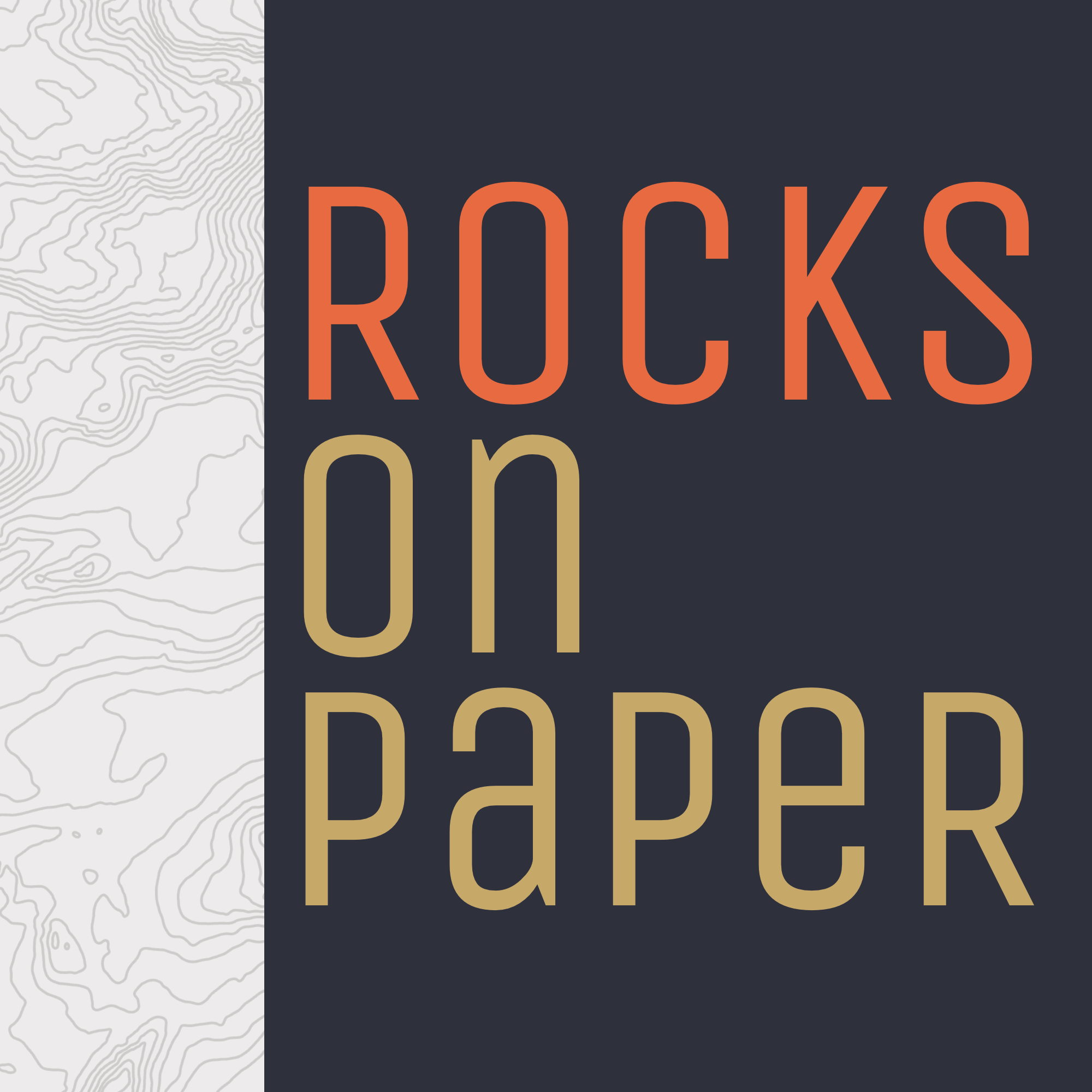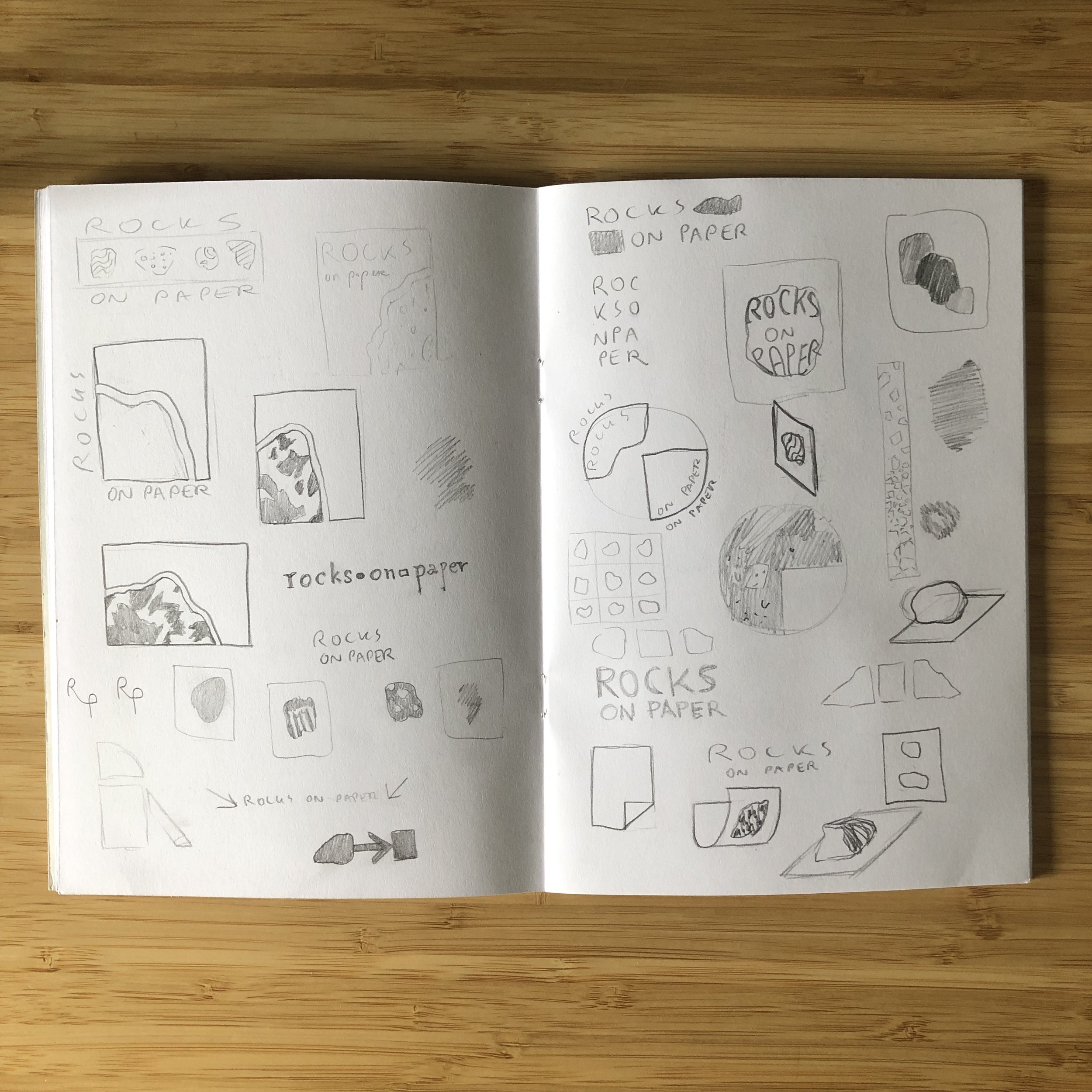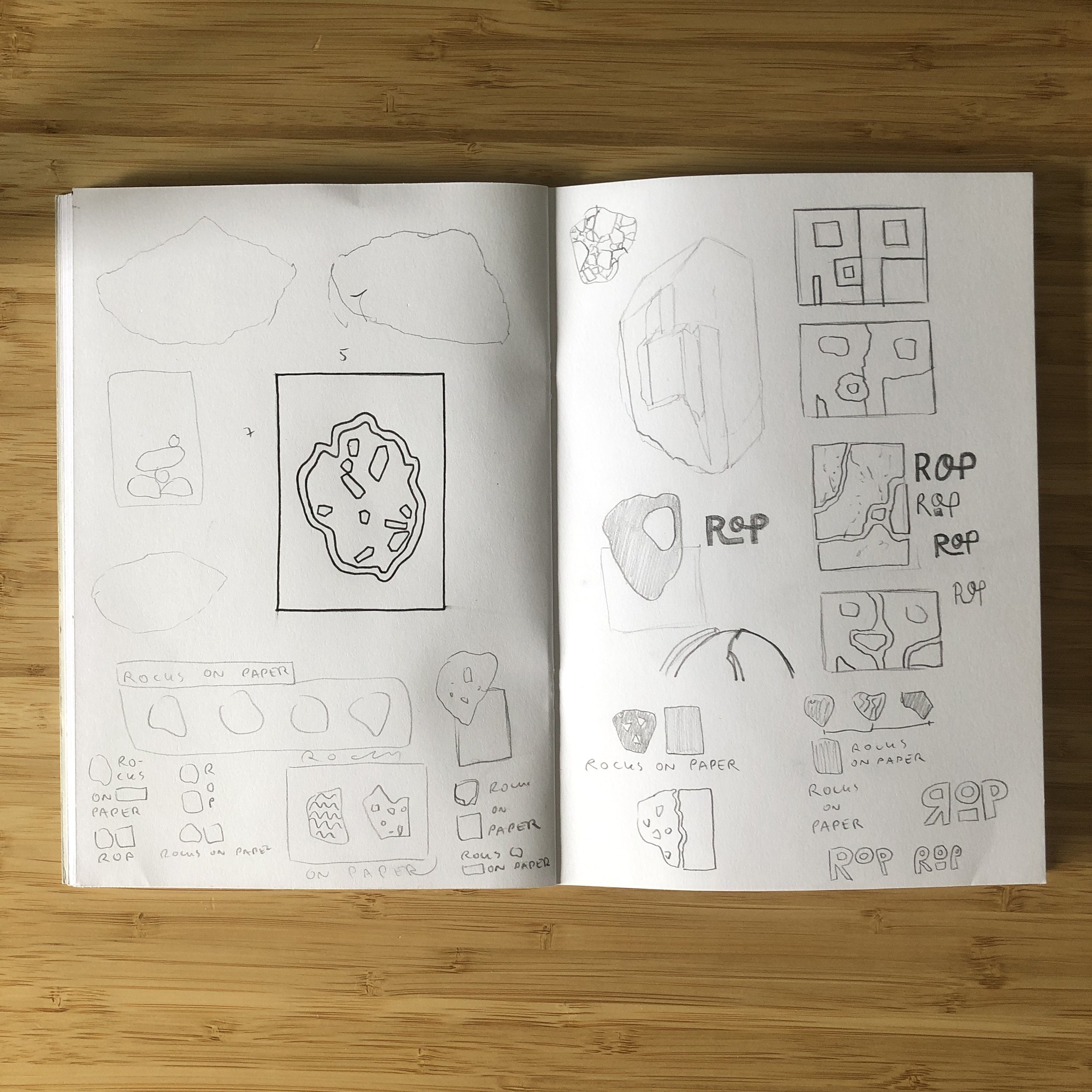Entering the Rockozoic
It’s the dawn of a new era for Rocks on Paper. Welcome to the Rockozoic.
Rocks on Paper has come a loooong way from its humble beginnings. It’s certainly become more of an established small business, so I decided to 〜finally〜 design a proper brand around it. Over the past few months, I’ve been working on a complete redesign of the logo and colours (which the new website is the result of). Fancy learning more about it? Well, read on!
First, let’s deep dive into the archives to see what Rocks on Paper used to look like. The Palaeorockozoic, if you like.
The evolution
Rocks on Paper was officially born on January 9th, 2021. My the-then logo consisted of a hand-drawn illustration of a metamorphic-y looking rock that I digitally traced. I think I chose the colours at random. Clearly, I had no idea what I was doing. But looking back, I don’t hate the logo.
In 2022, I was developing my website and decided it was time for a new logo. I scrapped the rock illustration and instead replaced it with coloured text and some topographic contours (they are actually of my dissertation field area in Iceland). The colours were selected from a palette made by one of the colour-generator websites.
Later in 2022, I think I started to dislike the new logo, opting to design something new. I was inspired by my favourite mineralogical structure: perthite. At the same time, I was playing around with Adobe Illustrator where I designed the third version of my logo. I only ever used it on my website (thank god). It’s okay but it doesn’t scream Rocks on Paper to me. After a few months, it was time for a change (again)…
Into the Rockozoic
With the introduction of my own e-shop, I knew that I wanted to rebrand (yet again). Rocks on Paper needed a new identity. I spent hours sketching down ideas (and even took a branding and logo design course). I needed something simple yet distinct.
I got inspired both by my recent cross-section illustrations and the vintage geological cross-section posters. The new logo was first hand-drawn, then digitised – so it still retains some of the quirkiness and imprecision of traditional art. The cross-section isn’t totally random: it is a very basic geological cross-section of Scotland from north to south. There are the folded Dalradian metasediments intruded by granites and a fault separating them from the southerly sediments. It’s by no means precise but there was some thought behind it.
The colours weren’t chosen at random this time. The Rocks on Paper palette is made of two core colours (Rock Black and Paper White) and three secondary colours (Lapis, Turquoise and Cinnabar).
Rock Black is more of a really, really, really dark grey rather than an absolute black. The exact colour was eye-dropped from a photo of a basalt I collected on Eyjafjallajökull during my dissertation fieldwork. The faded paper look of the traditional 18th/19th-century mineralogy posters inspired Paper White. It adds a layer of classiness and warmth, while also being easy on the eyes. As an artist, I was also inspired by the history of using rocks and minerals to produce pigments for painting. That’s where the three secondary colours come from. Lapis is inspired by lapis lazuli, a metamorphic rock which was traditionally mined in Sar-e-Sang, Afghanistan. Lapis lazuli was famously transported to Venice, where it was ground to produce the precious ultramarine pigment. Turquoise is another pigment sourced from southwest Asia – its name is derived from the Old French term for Turkey, where the mineral is thought to have been imported from. Finally, the spicy orange-red Cinnabar adds an unexpected splash of colour while also balancing the cool hue of Turquoise. Cinnabar (an ore of mercury) was historically used to produce the pigment known as vermilion. But with mercury being toxic, Cinnabar is only used sparingly on the website. All of the secondary colours are bold on purpose – they not only reflect the raw pigments but also help to add a pop of colour.







